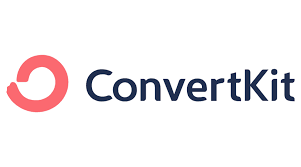Hey there! Are you on the hunt for the best email marketing tool for your business in 2024? Well, you’re in luck because today we’re diving deep into two of the hottest contenders in the game: ConvertKit and SendX. Both are juggernauts in their own right, but which one will give you the edge in your email marketing strategy? Let’s find out!
| ConvertKit | SendX |
|---|---|
 |  |
| G2 Score – 4.4 out of 5 stars | G2 Score – 4.6 out of 5 stars |
| TrustRadius Score – 8.8 out of 10 | TrustRadius Score – Nil |
User-Friendliness: The Gateway to Email Marketing Mastery
Let’s kick things off by talking about something that’s crucial for both beginners and seasoned marketers alike: user-friendliness. After all, nobody wants to spend hours figuring out how to send a simple email, right?
ConvertKit: A Haven for Creators
ConvertKit has been a darling of content creators and small business owners for a good reason – its simplicity. Imagine stepping into a kitchen where everything is exactly where you’d expect it to be; that’s ConvertKit for you. Designed with non-techy folks in mind, it lets you create, manage, and send emails without needing a degree in rocket science.
From setting up an email campaign to creating landing pages, everything in ConvertKit is straightforward. The platform’s clean interface doesn’t just look good; it makes navigating through various features a breeze. And when it comes to building emails, the visual editor is a godsend – it’s intuitive, drag-and-drop, and what you see is really what you get.
But here’s the kicker: ConvertKit doesn’t just make things easy; it also makes them powerful. Their automation workflows are a thing of beauty, enabling you to send targeted emails based on subscriber behavior without feeling overwhelmed.
SendX: The Rising Star
Now, let’s turn our attention to SendX. It’s a bit like the new kid on the block that’s quickly making friends. SendX prides itself on being user-friendly too, but it adds a dash of sophistication.
Where SendX shines is in its design flexibility. It offers a more diverse range of templates and customization options compared to ConvertKit. This is great if you want your emails to stand out or if you’re someone who enjoys having more creative control.
However, with greater power comes a bit more complexity. While SendX is still more user-friendly than many other tools out there, it might take you a bit longer to get the hang of all its features compared to ConvertKit. But don’t worry, it’s nothing too daunting, and for most users, it’s a worthwhile trade-off for the added flexibility.
So, Who Wins the User-Friendliness Battle?
In the user-friendliness arena, ConvertKit takes the lead if you value simplicity and ease of use above all else. It’s perfect for creators and small businesses who want a no-fuss, effective email marketing tool. On the other hand, SendX is your ally if you crave a bit more design flexibility and don’t mind a slightly steeper learning curve.
Pricing and Plans: Finding Your Best Fit
Moving on, let’s talk about a factor that’s always a deal-breaker: pricing. Whether you’re a bootstrapped startup or an established business, finding a tool that fits your budget and offers bang for your buck is crucial. So, how do ConvertKit and SendX stack up when it comes to their pricing and plans?
| ConvertKit | Free Plan: Offers basic features for up to 1,000 subscribers, including email broadcasts, landing pages, and forms. Creator Plan: Starting at $29/month for up to 1,000 subscribers, including automation and third-party integrations. The price increases with more subscribers. Creator Pro Plan: Starting at $59/month for up to 1,000 subscribers, adding advanced features like newsletter referral system, subscriber scoring, and advanced reporting. |
| SendX | Pricing Structure: Based on the number of subscribers, with all plans offering unlimited email sends. Basic Plans: Up to 1,000 subscribers: Starting at around $7.49/month when billed annually. Up to 2,500 subscribers: Starting at around $14.99/month when billed annually. Up to 5,000 subscribers: Starting at around $29.99/month when billed annually. Higher Volume Plans: For larger lists, the pricing continues to scale. For example: Up to 10,000 subscribers: Starting at around $39.99/month. Up to 15,000 subscribers: Pricing available upon request. |
ConvertKit: Straightforward and Scalable
ConvertKit keeps its pricing model simple and scalable. They offer a free plan, which is a great starting point for beginners or small businesses. This plan includes basic features like email broadcasts and landing pages, but it’s somewhat limited in terms of automation and advanced features.
As you scale up, ConvertKit’s paid plans offer more robust features. The price increases based on the number of subscribers, making it a flexible option as your audience grows. What’s great about ConvertKit’s pricing is its transparency – there are no hidden fees, and you get a clear idea of what you’re paying for at each level.
SendX: Affordable and Feature-Rich
SendX, on the other hand, positions itself as an affordable yet feature-rich option. They don’t offer a free plan, but their pricing is generally lower than ConvertKit’s for comparable tiers. This makes SendX an attractive option for businesses looking for a more economical choice without sacrificing functionality.
One of the highlights of SendX’s pricing structure is the inclusion of advanced features even in its lower-tier plans. This includes automation, integrations, and more sophisticated analytics, which are often reserved for higher tiers in other tools. For businesses on a tight budget but in need of comprehensive features, SendX can be a game-changer.
Breaking Down the Value
In terms of sheer affordability, SendX takes the lead, especially for businesses that need access to advanced features without a hefty price tag. However, ConvertKit’s free plan and its scalability can be more appealing for creators and small businesses that are just starting out and prefer a gradual investment as they grow. Pricing is always a balancing act between cost and features. In this matchup, SendX offers a budget-friendly option with a rich feature set, while ConvertKit provides a scalable solution that grows with your business.
Integration Capabilities: Expanding Your Digital Toolbox
In today’s digital world, your email marketing tool shouldn’t be an island. It needs to integrate seamlessly with other tools and services you use. Let’s explore how ConvertKit and SendX fare in terms of integration capabilities, which can significantly enhance your marketing efforts.
ConvertKit: The Integration-Friendly Platform
ConvertKit understands the importance of playing well with others in the digital sandbox. It boasts a wide array of integrations with popular platforms and services. Whether you’re using WordPress for your blog, Shopify for your e-commerce store, or Zapier to connect various apps, ConvertKit has you covered.
What makes ConvertKit stand out in the integration department is the ease with which these integrations can be set up. Most of them are plug-and-play, meaning you can connect your favorite tools with just a few clicks. This ease of integration extends ConvertKit’s functionality, allowing you to automate processes and create a more cohesive digital marketing strategy.
SendX: The Rising Integrator
SendX, although newer in the game, doesn’t lag far behind when it comes to integrations. It offers a respectable range of integration options with popular tools and services. Like ConvertKit, it covers the basics like e-commerce platforms, CRM systems, and productivity tools.
Where SendX tries to differentiate itself is in the depth of integration. While the setup process might not be as streamlined as ConvertKit’s, once you get it up and running, the integrations offer a deep level of functionality. This can be particularly useful for businesses that rely heavily on automation and data synchronization across different platforms.
Integration: A Critical Consideration
In the integration battle, ConvertKit wins on ease of use and a broad range of integrations. It’s ideal for businesses that want hassle-free integration with a wide variety of tools. SendX, on the other hand, offers deeper integration capabilities, which can be more beneficial for businesses with complex processes or specific integration needs.Integrations are key to creating an efficient and automated workflow. ConvertKit shines with its user-friendly integrations, while SendX offers depth in its integration capabilities.
Email Automation and Campaign Management
Email automation and campaign management are the heartbeats of any email marketing tool. They can make or break your marketing efforts. Let’s take a closer look at how ConvertKit and SendX handle these crucial features.
ConvertKit: Simplifying Automation
ConvertKit has earned accolades for making email automation simple and accessible. Its automation features are designed for users who want efficiency without getting bogged down in complexity. With ConvertKit, setting up automated email sequences and triggers is straightforward, thanks to its visual automation builder.
This visual approach allows you to map out your subscriber’s journey with ease. You can create complex email sequences based on specific actions, like opening an email or clicking a link, without feeling overwhelmed. ConvertKit’s automation is not just about sending emails; it’s about creating personalized experiences for your subscribers, which can significantly boost engagement and conversions.
SendX: Advanced Automation Capabilities
SendX takes a slightly different approach. It offers robust automation features that cater to more advanced users. While it might take a bit longer to master compared to ConvertKit, the level of customization and control you get is worth the effort.
With SendX, you can dive deep into automation workflows, segmenting your audience based on detailed criteria and tailoring your emails to match. It’s this granularity that sets SendX apart – you can fine-tune your campaigns to an extent that’s not as readily available in ConvertKit.
Campaign Management: A Balancing Act
When it comes to campaign management, both platforms offer solid capabilities. ConvertKit’s strength lies in its simplicity and user-friendly interface, making it ideal for those who want a hassle-free experience. SendX, on the other hand, offers more advanced features and greater control, suited for users who are willing to invest more time in mastering the platform.
In summary, both ConvertKit and SendX excel in email automation and campaign management, but they cater to different user needs. ConvertKit is your go-to for ease and simplicity, while SendX is better suited for those seeking advanced features and deeper customization.

Related: Check out our free SEO suite

Analytics and Reporting: Measuring Success
Analytics and reporting play a pivotal role in any email marketing strategy. They provide insights into what’s working and what needs tweaking. Let’s examine how ConvertKit and SendX approach this critical component.
ConvertKit: User-Friendly Analytics
ConvertKit offers straightforward and easy-to-understand analytics. The platform gives you a clear view of your email campaign performance with essential metrics like open rates, click rates, and subscriber growth. These insights are presented in a digestible format, making it easy for users to gauge the success of their campaigns.
The strength of ConvertKit’s analytics lies in its simplicity and visual representation. You get clean, easy-to-read graphs and charts, which make tracking your email performance hassle-free. This user-friendly approach to analytics is especially beneficial for those who want to quickly assess their campaign’s impact without getting lost in a sea of data.
SendX: In-Depth Reporting
SendX, in contrast, offers more detailed analytics and reporting. If you’re the kind of marketer who loves to dive deep into data, SendX might be more up your alley. The platform provides comprehensive insights into various aspects of your email campaigns, from detailed open and click statistics to more advanced metrics like heat maps and geo-tracking.
These in-depth analytics allow you to fine-tune your strategies with precision. However, the level of detail offered by SendX might be overwhelming for some users, especially those who prefer a more straightforward approach to data analysis.
Choosing the Right Analytics Tool
In the realm of analytics and reporting, your choice between ConvertKit and SendX will depend largely on your comfort with data. ConvertKit is ideal if you want a simple, no-fuss approach to analytics, while SendX is better suited for those who desire comprehensive data analysis capabilities. Analytics and reporting are crucial for refining your email marketing strategy. ConvertKit offers ease and clarity in its analytics, while SendX provides a more granular and detailed data analysis experience.
Customer Support and Resources
The quality of customer support and the availability of learning resources can significantly influence your experience with an email marketing tool. Let’s see how ConvertKit and SendX stack up in these areas.
ConvertKit: Exceptional Support and a Wealth of Resources
ConvertKit is renowned for its exceptional customer support. They provide a wide range of support options, including email, live chat, and a comprehensive knowledge base. What sets ConvertKit apart is the responsiveness and helpfulness of their support team. They are known for going above and beyond to assist their users, whether it’s a technical issue or strategic advice.
In addition to their support, ConvertKit offers an extensive array of resources for users. This includes webinars, tutorials, and a blog filled with valuable content on email marketing strategies. These resources are not just informative but also actionable, helping users to enhance their email marketing skills continually.
SendX: Reliable Support and Growing Resources
SendX, while newer in the field, offers reliable customer support. Their team is accessible via email and live chat, and they provide prompt and helpful responses. While their support is commendable, it may not be as extensive in terms of availability and scope as ConvertKit’s.
In terms of resources, SendX is steadily building a library of useful content. They offer a range of articles and guides, which are particularly helpful for users looking to deepen their understanding of email marketing. While their resource pool might not be as vast as ConvertKit’s at the moment, they are consistently adding new and valuable content.
Support and Learning: Essential for Growth
In customer support and educational resources, ConvertKit clearly takes the lead with its comprehensive and user-friendly support system and a wealth of learning materials. SendX, though not as extensive, still offers reliable support and is steadily growing its repository of resources. Effective customer support and access to educational content are crucial for making the most out of any email marketing tool. ConvertKit excels with its outstanding support and extensive resources, while SendX is a solid option with reliable support and an expanding range of helpful materials.
Email Design and Customization
The design and customization of your emails play a significant role in engaging your audience. It’s about striking the right balance between aesthetics and functionality. Let’s compare how ConvertKit and SendX handle email design and customization.
ConvertKit: Simplicity and Elegance
ConvertKit’s approach to email design is grounded in simplicity and effectiveness. The platform offers a range of beautifully designed, minimalist templates that are easy to customize. These templates are focused on delivering your content in a clean and distraction-free manner, which is particularly effective for creators and bloggers who want their words to take center stage.
The customization options in ConvertKit are straightforward. You don’t need to know HTML or CSS to create stunning emails. The drag-and-drop editor makes it easy to tweak templates and add elements like images and call-to-actions, ensuring your emails reflect your brand and message without much hassle.
SendX: Creative Flexibility and Rich Customization
SendX takes a more expansive approach to email design. It offers a broader selection of templates and more robust customization options. If you’re someone who enjoys having more creative control over your email design, SendX might be more appealing.
With SendX, you can delve into more detailed aspects of email design. The platform provides advanced customization options, allowing you to tweak layouts, fonts, colors, and more to align perfectly with your brand’s aesthetic. This level of customization is great for businesses and marketers who prioritize unique and visually rich email content.
Design for Engagement
When it comes to email design and customization, the choice between ConvertKit and SendX depends on your design needs and preferences. ConvertKit is ideal for those who prefer simplicity and elegance, focusing more on content than complex design elements. SendX, on the other hand, caters to users who seek more creative freedom and rich customization options in their email design.
In summary, both ConvertKit and SendX offer strong capabilities in email design and customization, but they cater to different preferences. ConvertKit is about simplicity and clarity, while SendX offers greater flexibility and a richer set of design options.
Conclusion
In conclusion, ConvertKit and SendX both offer compelling features for email marketing in 2024, but they cater to different needs and preferences. ConvertKit stands out with its user-friendly interface, exceptional customer support, straightforward analytics, and elegant email designs, making it ideal for creators, bloggers, and small businesses seeking simplicity and effectiveness. On the other hand, SendX appeals to users requiring more advanced features, detailed analytics, comprehensive customization options, and a broader range of integrations, suitable for businesses looking for depth and flexibility in their email marketing campaigns.
Ultimately, the choice between ConvertKit and SendX hinges on your specific email marketing goals, technical comfort, and design preferences. Both platforms are capable contenders in the email marketing arena, each with its unique strengths and offerings. Your decision should align with your business’s scale, audience engagement strategy, and desired level of control over your email marketing processes.
Read Next
- Campaign Monitor vs HubSpot Email Marketing: The Best Email Marketing Tool for 2024
- ConvertKit vs ReachMail: The Best Email Marketing Tool for 2024
- ConvertKit vs SalesHandy: The Best Email Marketing Tool for 2024
- ConvertKit vs Campaigner: The Best Email Marketing Tool for 2024
- ConvertKit vs Stripo: The Best Email Marketing Tool for 2024






















Comments are closed.